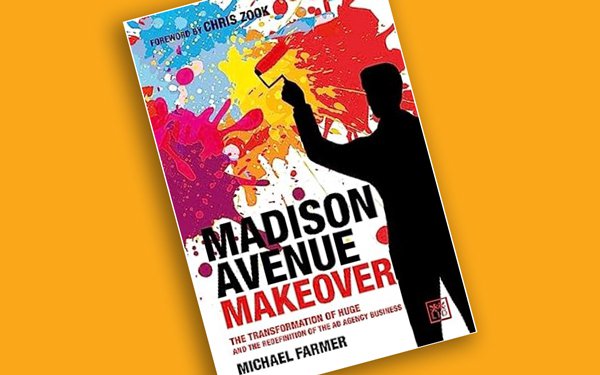Commentary
Michael Farmer's 'Fly-On-The-Wall' Take On Huge's Radical Reorganization
- by Richard Whitman , Columnist, July 11, 2023

For two decades Interpublic agency Huge was on the cutting edge of digital marketing and design, generating double digit revenue and profit growth and expanding its footprint with offices around the country and internationally.
It’s early work on behalf of clients like Ikea, JetBlue and others was viewed as innovative and pioneering—efforts that created a path in the digital space for others to follow.
advertisement
advertisement
In 2008 IPG acquired a majority stake in the company and invested heavily in the agency after the transaction, driving 10-fold revenue and staffing growth between 2009 and 2016.
But then growth stagnated as the agency went through four CEOs in as many years. The holding company began calling out the agency as a drag on earnings in recent quarters.
In 2021 Matt Baxter, the veteran media executive who led a turnaround effort at IPG media shop Initiative, was looking for a new challenge. IPG executives pointed him at Huge and named him CEO with a remit to fix its problems.
And now a new book has just been published that chronicles Huge’s two-year journey of reinvention as led by Baxter and the firm’s executive leadership team. It's called Madison Avenue Makeover: The Transformation Of Huge And The Redefinition Of The Ad Agency Business, by Michael Farmer.
The book, from Lid Publishing, was made available on Amazon today.
Farmer as you may know drew very positive notices for an earlier work back in 2015 called, Madison Avenue Manslaughter An Inside View of Fee-Cutting Clients, Profit-Hungry Owners and Declining Ad Agencies.
Farmer was given “fly-on-the-wall" access to Huge as the agency underwent its transformation, which began upon Baxter’s arrival in the Spring of 2021.
As Farmer recounts, the agency didn’t do a lot of external market research. But it did hire The Business Model Company to help frame its metamorphosis. The end result is a shift from a service-focused and office-oriented agency to a global creative consultancy. The consultancy offers a menu of products sold at specific prices, as opposed to adding up all the hours of time put into a project.
Offices have been done away with in the traditional sense, in part to avoid turf battles and a fiefdom mentality. Also, as a global entity the company can better match talent (from any location worldwide) to a specific client project.
The book is about Huge but Farmer stresses that the agency’s shift “provides a new template for the industry,” a template, he adds that “puts creativity, products, and organization together in a focused mission.”
A handful of past and present industry mavens offer endorsements in the front of the book. Agency luminary Jon Bond offers the succinct observation that it's a “’how to’ for an industry asking itself ‘what now?’”
John Siefert, the former Global CEO of Ogilvy writes that "few observers of the advertising industry dig as deep into the operating details of the actual work" as Farmer.
The book ends but the story doesn't. Whether the makeover works or not could take years to play out with lots of tweaks and modifications along the way.
It’s a worthwhile read, for brands and agencies alike.


